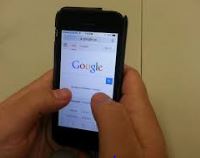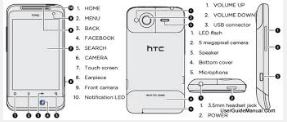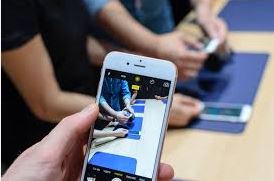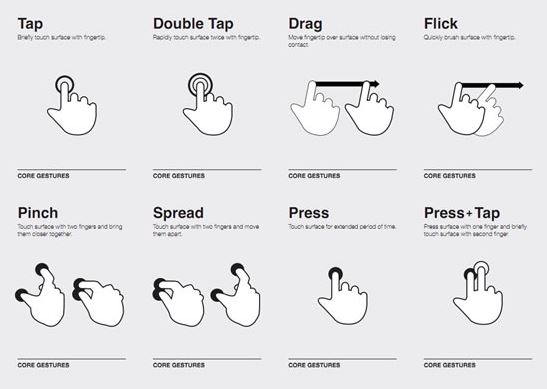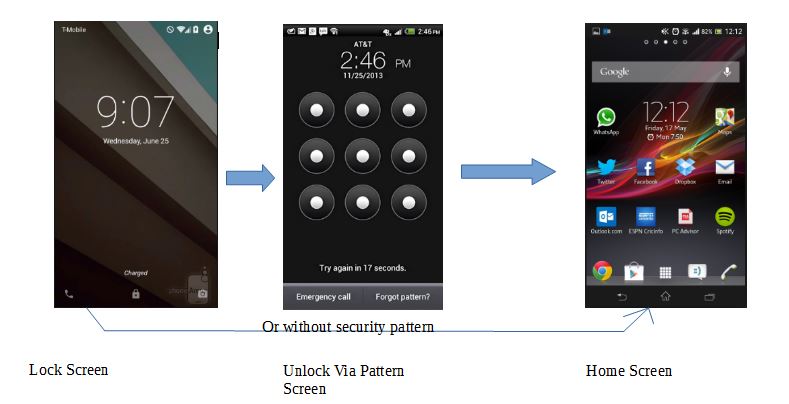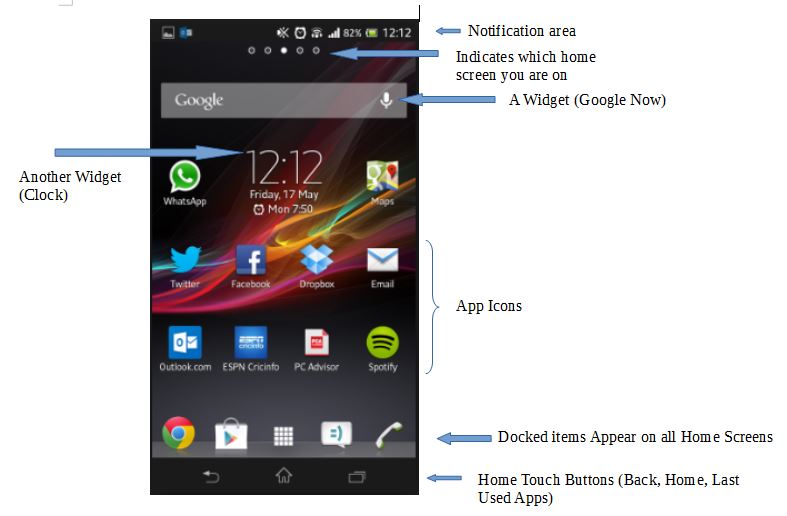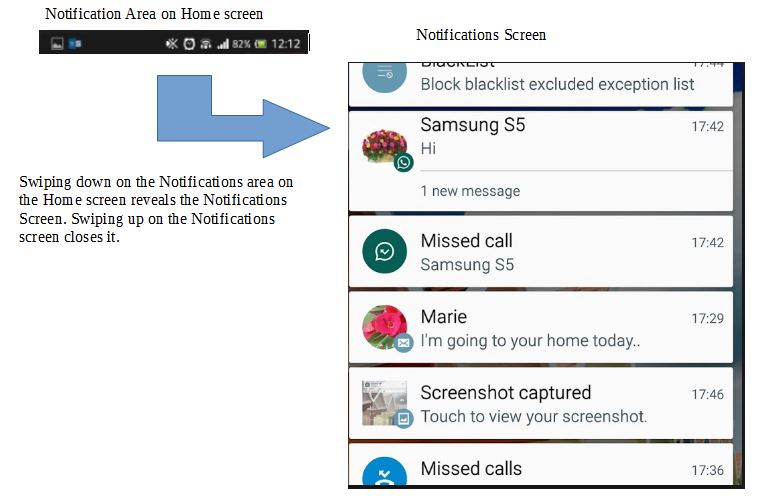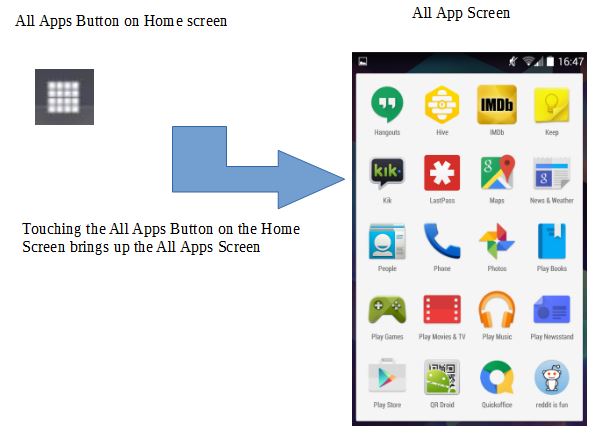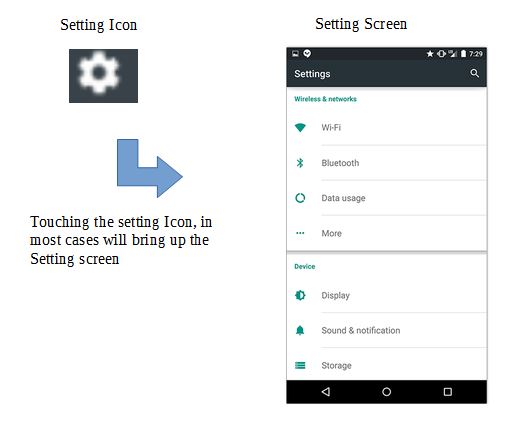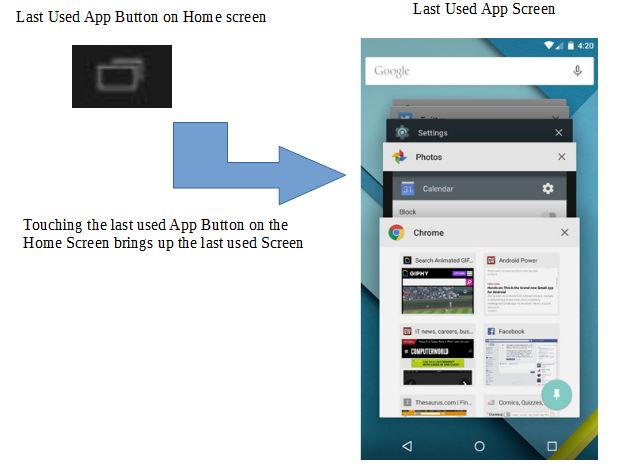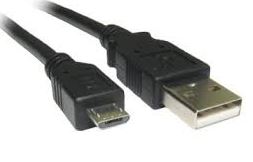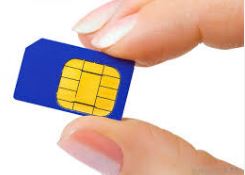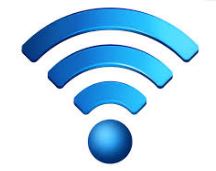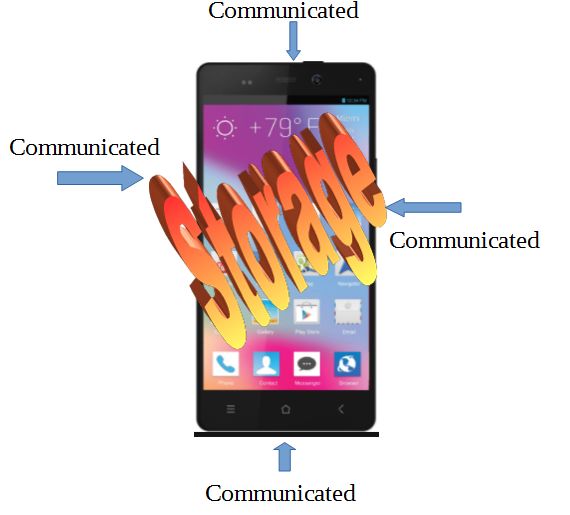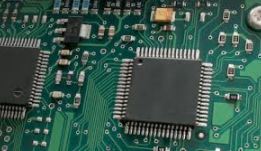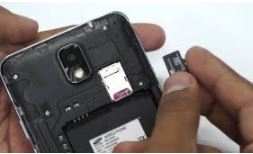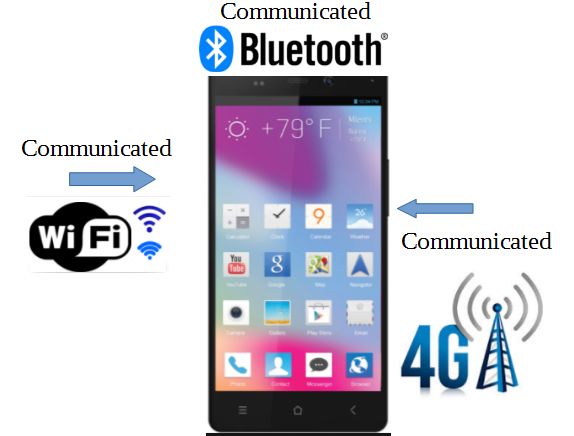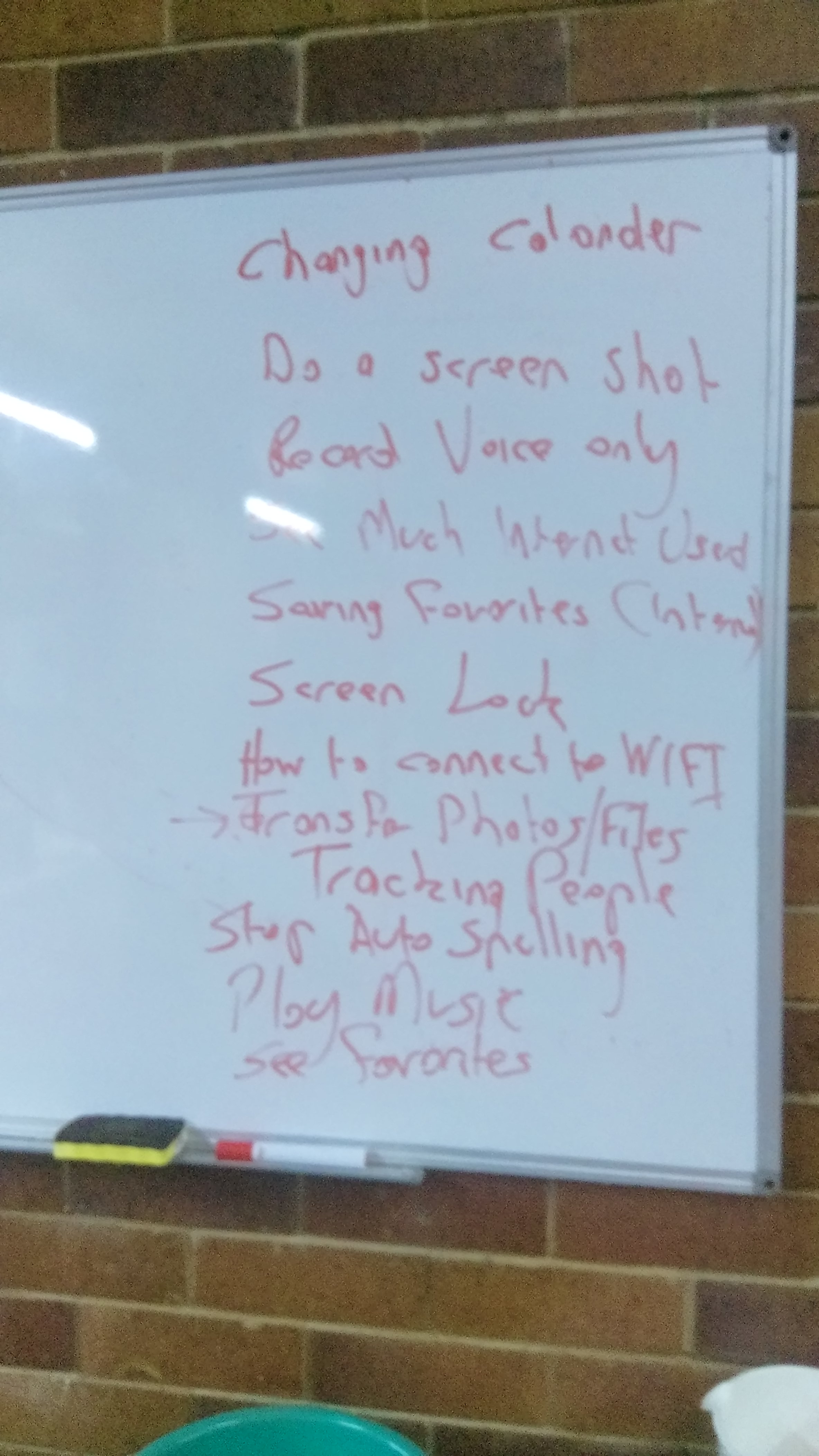Table of Contents
Using Smart Phones
Other notes I have written on phones: Mobile Devises, Smart Phones, Mobile Phone Workshop
The best way to learn how to use a smart phone is to try to use it. Then the bits you can not use or have trouble using, look for help on how to use it.
What is a Smart Phone?
A smart phone is a mobile phone that performs many of the functions of a computer. See https://en.wikipedia.org/wiki/Smartphone
The term Smart Phone, which appears to have been first used in 2000, is not a particularly accurate name for these devises, because the word smart, as defined in a dictionary when used as an adjective, is “having or showing a quick-witted intelligence” As these devise had NO intelligence or whit, they can not be classified as smart. The term Smart Phone would appear to have been created by marketing people
A better description of them would be a pocket computer with mobile phone capabilities. Generally they are used more often as a computer than as a phone.
Iphones, Android Phones and Windows Phones, are all Smart Phones. They all operate just like a computer but can fit in your pocket.
What about Tablets? Eg. Ipads, Android Pads and Microsoft Surface. They are also computers. They operate the same as smart phones but are just bigger so can not fit in your pocket. Some can make mobile phone calls and some can not. being able to do so is more a marketing issue that a technical one
In the third quarter of 2012, one billion smartphones were in use worldwide. Global smartphone sales surpassed the sales figures for regular mobile phones in early 2013
The rerason they are so popular may be because of how they are so versatile. They are the Swiss Army knife of technology.
Hear is a list of some of How many things can a Smart Phone replace?
In Q1 2016 for the first time the shipments dropped by 3 percent year on year. The situation was caused by market saturation in countries like China and consumer caution about the future of the world economy.
Here is a vido explaining what a smart phone is:
What Is a Smartphone?
How do mobile Phones Work
You can find my written explanation in my older course “Mobile Phone Workshop” hear or watch this video:
How do Cellphones Work?
Where to find help on using a Smart Phone
In the phone it self. Some smart phones have little help on hint screens when you first start them or when you first use an app. However they may be switched off by yourself or the person that previously owned the phone if you purchased it second hand.
Via a search function within the phone. If you phone has a search function type “help” and what you want help on
Via the internet. All smart phones have the ability to connect to the internet. So you can do a Google search on your phone on any of the functions that can be used via the phone. The results of the search could be in text that you can read but could also be videos that show and explain how to perform functions. Ther are even ways to book mark, or set favorites on your phone so that you can go back to the web pages that gave you help.
Here is a video I made some time ago showing you how to learn how to use a smart phone:
https://www.youtube.com/watch?v=sQS5RGH3wvk
Via the phones built in manual. Most smart phones have the manual for the phone included as a file built into the phone. Even if they dont, often it is possible to search the internet and find such manuals and save them to your phone.
Remembering what you have learnt
A difficult part about any learning is remembering what you have learnt. But this is where your smart phone can help you. You can write what you have learnt and save it in your phone. Or you can record your voice, explaining what you have learnt. Or better still you can use you smart phone to record a video showing what you have learnt, which will then be stored on your phone.
Of course it would be difficult to show doing something on your phone and record it at the same time, although ther are ways to do that, but it will not record what you touch swipe or the like on your phone. But many people have smart phones, so you can use another persons phone to record what you are doing on your phone and then transfer the recording to your phone. Which is easily done. That is what we will do during training sessions.
Hear are some videos on how to record and play video on your smart phone:
Lights, smartphone, action!
http://splash.abc.net.au/home#!/media/1918840/lights-smartphone-action
How to take better pictures and videos on your cell phone
https://www.youtube.com/watch?v=TaNJlIqlKvA
How to properly hold your phone when you record videos
Recording your Smart Phones Screen
You can, with some apps, record the actions that take place on your smart phone screen. These will be saved as a video within your phone and can be replayed as often as you like on yor phone without an internet connection or using any of your internet quota.
One such program is AZ Screen recorder which you can get from the Google Play Store.
https://play.google.com/store/apps/details?id=com.hecorat.screenrecorder.free&hl=en
Here is a video that demonstrates how it works:
AZ Screen Recorder - No Root Needed - Including Lollipop Roms
https://www.youtube.com/watch?v=EMvo0Fr-w5w
As many people have smart phones and all of then have the ability to record video you can use your or someone elses smart phone to record how to do something. It then can be replayed on the phone as many timers as you like. If you record it on someones elses phone ther are multiple ways to transfer it to your phone. See getting_information_to_and_from_a_smart_phone:Getting information to and from a Smart Phone.
Using Gestures (The touch functions)
Your ability to use a smart phone is determined by how well you can use what is called gestures. That is the ability of touch the screen and move the phone in particular ways. Ther are thousands of combinations of gestures. From the simple touch, swiping, pinching, swiping a particular way, using multiple fingers, through to tilting the phone a particular way or putting it face down, to moving the phone to a different physical location. Each of these gestures or combinations of gestures, can be used to activate different function of a smart phone. Like touching to start an app, swiping to change screens, pinching to zoom in or out, putting the phone face down to stop music playing, moving the phone to move what is on the screen in a photo or in a game, or moving to a different physical location to show that location on a map or remind you what to get when you arrive at the supermarket.
Some Videos showing using Common Gestures
Introduction to Android Smartphones 101 Common Gestures
https://www.youtube.com/watch?v=_0E8IwHhAgk
Android Tutorial - Touch Gestures
https://www.youtube.com/watch?v=xtpEsOl8rSM
Smart gestures tutorial Doogee
This video show some less common gestures. They may not work on all phones because as the video shows,they may have to be switched on.
Some hints with using gestures
- - Try to be as precise as you can when touching items. Especially where other items surround the item you are trying to touch. eg on a screen keyboard
- - Ther is no need to press hard on the screen. Ther are no physically buttons so with most smart phones pressing harder makes no difference
- - When something requires a touch do a distinct touch and then remove your finger. As ther is a touch and also a long touch that are 2 different gestures that will do 2 different things, it important that you distinguish between the 2. A long touch is similar to a right click on a mouse when using a computer.
- - If the gestures you are using do not give you the result you want try other gestures. like a long touch, which is touching something for more that about a second.
- - If a touch does not produce the result you want make sure you you are actually touching the phone
- - Do not try to use gestures with wet hands. It will not work. Same applies when wearing gloves.
- - When swiping it is NOT necessary to swipe beyond the width of the phone. Once your finger leave the phone it will not sense it
- - Some older phone that are a bit slow might take some time for the phone to activate the function of the gesture. In this case you may have to wait for a while
- - For Web pages that are not designed to be used on a phone it may not be possible to do what you want. eg. In multi selections grouping a to and from selection
- - It can be very difficult to zoom on a web page that has a, or multiple leamable items on the page. eg The Bureau of Meteorology, MetEye function. http://www.bom.gov.au/australia/meteye/
- - Unfortunately the authors of apps often don't give any indication on the screen,that a gesture can be used to activate a function. So if a manual or help function exist it may be worthwhile reading
- - When leaning something new, perform the gestures very slowly so you get to see what is happening. Sometimes undocumented gestures can be revealed
Screen goes Off
The part of your smart phone that uses the most battery power is the screen. Hence most phones have it set so that if you do not use your phone for a period of time, the screen will switch off automatically. NOTE: it is only the screen that switches off not the entire phone. Everything continues to operate, its is just, because the screen if off, you can not see anything happening. To turn the screen back on you do a quick press of the one off button. You may then have to unlock the phone if you use a lock or security function.
If you wish to switch the screen off, you quickly press the on off button. NOTE: To get to where you switch off the phone completely, you hold the on off button, for a few seconds.
If you wish to change the time that it takes before the screen switches off automatically, this is usually done within setting, the screen sub function. You can change to a number of predetermined times or make it so that the screen never goes off. But if you do, you will find the battery will flatten very quickly. Ther is a function of some phones so that if it is being powered via external power, the screen will remain on regardless of the timed setting. Some apps also have the ability to ignore the times auto screen switch off
When you are talking withing a call with the phone to your ear, the screen will automatically switch off. The is achieved via the proximity sensor built into your phone. It senses that the phone is near your ear and so switches the screen of when you are in a call. The reason this is done is so that the touch functions of the phone will not work, by you touching the phone to your ear. The screen will come back on and the touch functions work again, by simply moving the phone away from your ear.
How to change the auto-lock time on Samsung Galaxy S6 Basic Tutorials
The Big Picture
The diagrams and pictures below show various screens used on Android Phones.
Familiarize your self with each of these screens and how to use gestures to get from one screen to another. Try to determine what each screen is for. Then try and determine what each item on each screen is for.
Lock to Home Screen
When on the Home Screen, quickly pressing the phones power button (usually on a side or the top of the phone. NOT a icon on the screen) will turn the display off. The phone is not off just the screen. To get the screen back on quickly press the phone power button and the screen will come back on. You will be returned to the Unlock screen or the security pattern screen depending on your settings.
To turn the phone off completely, hold in, the phones power Button and then follow the prompts.
If you do not use the phone for a predetermined period of time the display screen will turn off automatically. To turn it back on follow the directions above.
The predetermined period of time before the screen switches of automatically, can be changed in settings
Home Screen
Notifications Screen
Quick Setting Screen
All Apps Screen
Settings Screen
Last Used Apps Screen
Switching between Apps and functions on a Smart Phone
Because smart phones are modern computers and modern computers can do multiple things at the same time ther has to be a way for you to switch between the things you want to do. This is call task switching and ther are multiple was of doing it.
Because of the limited amount of space on a phone screen it is not possible to show all the Apps that are installed or even the ones that are currently running (operating) Touching particular icons on the screen or using particular gestures allows you to switch between Apps and, or functions.
Forward and Back
All Android phones have a back icon. ![]() The basic concept is that if you start an App or function and then from that start another App or function, and so on, if you touch the back icon you will be taken back to the place you just came from. And from ther touching the back icon again you will be taken back to the place it came from and so on. Until you get to the Home Screen.
The basic concept is that if you start an App or function and then from that start another App or function, and so on, if you touch the back icon you will be taken back to the place you just came from. And from ther touching the back icon again you will be taken back to the place it came from and so on. Until you get to the Home Screen.
Directly to the Home Screen
If you have started multiple Apps or functions and you wish to get back to the Home Screen without going back through each App function you can touch the Home Icon. ![]()
Recently Used Apps
If have been using a number of Apps and you wish to use a previous used App you can press the Last Used Apps icon, ![]() which will bring up a scroll-able list of the most recent used apps. Touching a item on that list will take you directly to that App, without having to go to the Home Screen.
which will bring up a scroll-able list of the most recent used apps. Touching a item on that list will take you directly to that App, without having to go to the Home Screen.
Interruptions Notification Screen
When you are doing anything on your phone, the phone App may interrupt what you are currently doing because someone is ringing you. It will most likely be via the sound of your ring tone together with some prompt for action over the top of what you are currently doing on the screen. The options you have, will be displayed, by you performing certain gestures. Many Apps can interrupt what you are currently doing. For example, an alarm from the clock App, email arriving, a message arriving.
If you are not around to hear or see these interruptions they will be recorded in the Notification Screen often with a icon appearing on the notification area on the Home Screen. Swiping down on it will reveal the Notifications Screen where you can see a list of notifications and take the appropriate action.
Installing, Removing and updating Apps
What are Apps
The term Apps is an abbreviation for Applications. Applications or apps, are programs (sets of instructions) that enable your phone to perform certain functions. Because smart phones are just physically small computers, they can do most things a computer can do. Actually because they have more built it functions than a computer, like GPS, Proximity sensor, Gforce sensor and Compass, and they are portable, they can do many things a computer can not do.
See how many things are smartphone can replace
Just like a computer has to have additional programs installed to allow it to do more things the same applies to smart phones. Ther are many more functions that you can use your smart phone for than just those apps that it came with. But to be able to use them, you need to install additional apps. But how do you do so.
Installing New Apps
Ther are multiple ways of installing new apps on your phone. But the most common way on a Android phone is to do so via the Google Playstore App. Basically you just start the Playstore app, browse and select the app and follow the on screen instructions. To be able to use the Google Playstore you have to have a Google account. If you dont have one, the playstore app will take you through the process of obtaining a Google account. It is free to obtain a google account.
Ther are both paid for and free apps. It is not necessarily, that the paid for ones are better than the free ones. It is worthwhile looking for a free app. When you purchase a paid for app you usually do so via a credit card. Ther are some paid for app that are sold on a period of time basis. You should be aware of this when you finally touch, where it sais, you accept to purchasing the app, as you may not want to be charged for an app on a ongoing basis.
Apps can also be installed via a computer. By going to the Google Playstore web site you can browse and select apps and when you accept that you wish to install an App it will automatically be installed on your phone, usually via a Wifi connection or possibly via the mobile internet data of your phone.
It is also possible to copy an app to a phone. See Getting information to and from a Smart Phone and then installing it.
Uninstalling Apps
Ther are multiple ways to uninstall apps. NOTE: Removing apps from the Home Screen is NOT uninstalling it. All this does is remove it from the home screen. It will still exist, installed on the phone, it just has been removed from the home screen.
A common way to uninstall apps is to do so via the Setting/Apps functions of the phone. This has an Uninstall button. When accepted the app will be uninstall from your phone and removed from the home screen.
Another way to uninstall apps is via the Playstore. From the Playstore App touch the menu (three bars) and touch My Apps and Games. Touch the app you wish to uninstall and touch the uninstall button.
Updating Apps
The people that create the apps (programers) often update then to fix bugs (mistakes) and make improvements in the way the app works. This is called updating apps. It can be done multiple ways. Similar to the ways apps are installed but touching the update button.
It is also possible to have the updates performed automatically via the Playstore app on your phone. Within the Playstore App App touch the menu (three bars) and touch settings. Touch Auto-update apps and choose the appropriate option.
Some Suggesed Apps
Make the Home screens the way you want them
The home screens on your smart phone can be setup to have the items that you want on them and in the place you want them.
You can have multiple home screens. To move from one to another you swipe in the direction you wish to move. Usually ther are dots at the bottom of each home screen that shows you which home screen you are currently viewing and its association to other home screens.
Different phone manufacturers provide different ways of manipulating the items on home screens. Below is only one way that may or may not apply to your phone.
What are the items on home screens?
On Android phones ther are two different types of items on home screens. Icons representing apps and bigger icons representing widgets that are another way to use, u sally, the same apps. When you touch an app icon it will start that app and usually replace the home screen with the apps screen. The bigger icons that represent widgets are usually designed to show changing information on the home screen. egs. A weather app may show the current weather or a Clock app may show the current time. It is therfore not usually necessary to open or start the widget to see information. However, usually you can also touch a widget to open or start an app.
Moving items on Home Screens
When you do a long touch on a app icon or widget and leave your finger on it, it will change in appearance. With you finger still on the icon you can then move it to another location on the current home screen or to another home screen by sliding your finger over the screen. After you remove your finger from the screen the item will now be in that position. To move to another home screen you slide your singer over to the side of the screen in the direction of the home screen you want to go to.
Adding items to a home screen
Depending on how you have the the Google play store app set up, when you install new apps they may or may not be put on a home screen. See Installing Apps. You can only add items to your home screens for which you have apps or data.
To add a App icon to a home screen, touch the All Apps button  on the home screen. Then do a long press on the item wish to add. The screen will change to show an outline of the last home screen you used. Whilst still keeping your finger on the screen slide it to were you wish it to be the home screen and then, and only then, lift your finger from the screen. If you wish to have it on a different home screen slide your finger in the direction of the home screen you wish to use.
on the home screen. Then do a long press on the item wish to add. The screen will change to show an outline of the last home screen you used. Whilst still keeping your finger on the screen slide it to were you wish it to be the home screen and then, and only then, lift your finger from the screen. If you wish to have it on a different home screen slide your finger in the direction of the home screen you wish to use.
To add a widget icon to a home screen do a long touch on a blank area of a home screen. The touch the widget icon. A list of widgets will be presented. Long touch the one you want to add and the screen will change to show an outline of the last home screen you used. Whilst still keeping you finger on the screen slide it to were you wish it to be on the home screen and then, and only then, lift your finger from the screen. If you wish to have it on a different home screen slide your finger in the direction of the home screen you wish to use.
Removing items from the Home Screen
NOTE: Removing items form a home screen will NOT uninstall if from your phone. See Uninstalling Apps.
Long touch the item you wish to remove. Whilst still touching the item move to where on the screen it has the text remove or a bin icon is shown, Lift your finger off the screen.
Getting information To and From a Smart Phone
With the appropriate app you can type information in to your smart phone, record your voice, take a photo, record a video or record where you have been. But because it is a digital phone it is a computer phone, with multiple radios built in, so can be used to transfer information to and from other computer and computing devices both via and without a cable
This can be done multiple ways.
With a cable
Currently, all smart phones are supplied with a cable to charge the phones battery, however some of the more advanced phones can be charged without a cable. The cable usually has a full USB plug at one end, that can be plugged into a computer and a micro USB plug at the other end that plugs into the phone. In addition to charging the phone battery the cable can be used to transfer information between the phone and a computer, doing so and charging the battery at the same time.
When a cable is used this way the phone becomes an external storage device to the computer so that all the functionality of copying or moving information between the phone and computer is controlled at the computer end. Therefore it is necessary to understand how your computers file system works.
Here are some videos that show how to do it:
How to Transfer files from your Android phone to your PC / Mac computer
https://www.youtube.com/watch?v=kgRlVBhvBoM
Enable Android Phone USB Computer Connection |Learn Howto|
https://www.youtube.com/watch?v=-1MltcVKU7o
How to transfer files between an Android device and a Computer In this video they guy show actually shows plugging that cable into the phone
Via SIM card
The contacts (phone numbers of people you can call) can be stored on mobile phone SIM card. If a SIM card is removed from one phone and put in another phone then those contacts can be used in that phone. Most phones also have the ability to copy the SIM contacts to and from the phones internal memory. However because SIM cards have much lower capacity for storing contacts than phones internal memory, most modern smart phones do not store all contacts on SIM cards.
Ther are easier and more automatic ways of moving contacts between phones that via a SIM card.
Here are some videos that show how to transfer contacts to and from a SIM card:
Although these videos are for specific phones the process is not much different for particular model phones
How to Copy /Transfer Contacts From Sim Card to Phone on Samsung Galaxy S5
https://www.youtube.com/watch?v=_uUi5xtwE_s
Samsung Galaxy A3, A5, A7 (2016) - How to Copy Contacts from SIM to Phone Memory
Via a Memory Card
Some smart phones had the facility to install a micro SD card. This is a smaller version of the same SD memory cards that go into Digital Cameras. On phones that have this facility it is possible to select where the phone saves information, like Photos, videos or documents, in the phones internal memory or to the installed micro SD card. It is also possible to copy or move information from and to the phones internal or micro SD memory. Because the Micro SD card is removable it is possible to take it out of one phone and put it into another phone or a computer or camera. Ther are adapters that allow Micro SD cards to be used the same way full size SD cards are used.
To be able to copy or move files between the phones internal memory and Micro SD Memory you will need a File manager app and need to understand how computer filing systems work.
Different model phone have different ways of installing and removing micro SD cards. Consult your phones manual to see how to do this. Apple Iphones do not have the ability to install external SD cards. If a phone become unusable the information can not be retrieved from its internal memory but if it has a Micro SD card that can be put in to another phone.
A video on how to insert a Micro SD card into a smart phone:
Samsung Galaxy S5: How to Insert a Micro SD Card
Other models of phone may do it slightly differently, but the concept is the same
https://www.youtube.com/watch?v=41lohalQqWw
How to move files to a SD card. The opposite, ie from SD, is also possible.
samsung galaxy s5 How To Move or Transfer files photos folders to SD Card from internal memory
Again a similar procedure with other model phones.
https://www.youtube.com/watch?v=jYEzYzY-a3w
How To Use A File Manager/Explorer On Android
This video shows you how to use the ES File Explorer (one of the many file manager apps you can get from the google play store) to manage the files on an Android smart phone.
How To Use A File Manager/Explorer On Android
Without a cable
In addition to the radio used used to make mobile phone calls in smart phones, typically 4 other radios exist. A FM radio receiver for listening to FM radio, a Global Positioning System (GPS) receiver for enabling the establishment of the phones exact position, a Bluetooth transmitter/receiver for transferring data over short distances and a WiFi transmitter/receiver for transferring data over a longer distance. All 5 radios can and are often used at the same time. They allow information to be received and other than for the FM and GPS radios, to be sent by radio without the use of a cable. ie wirelessly .
Via Bluetooth
Bluetooth is a wireless technology designed to allow devises to communicate over relatively short distances. It is a lot slower than Wifi. Typically with smart phones it is used to allow a phone to be used hands free in a car, to pay music via a cars entertainment system or to non car external speakers, to move or copy information between smart phones, computers and other devises.
Typically to use bluetooth on a smart phone, bluetooth has to be switched on, the phone has to be made visible, paired and connected the other bluetooth device. Making visible is done so that other devises get can see the name of the phone. Pairing is where the a code is entered on both the phone and the other devise so that it is known the connection is valid and reduce the likelihood of unauthorized access to phone information.
How to Pair a Bluetooth Device with an Android Phone
https://www.youtube.com/watch?v=4KD2gRBRGbM
Transfer contacts from phone to phone easily for (android), Using Bluetooth.
https://www.youtube.com/watch?v=drn20UuRSX4
How to Transfer Pictures Using Bluetooth
https://www.youtube.com/watch?v=9pH3FlmnPrg
Using the Samsung Fascinate Together With Stereo Bluetooth and Playing Music
Via WiFi
WiFi is the most common way to connect home internet to a smart phone. No cables are necessary, but a WiFi enabling devise, usually a WiFi router, is required in the home. Typically internet access is cheaper, per unit of data, in a wired internet home than via the mobile phone network internet. Hence it is usually cheaper to use a home internet on a smart phone via WiFi than to use the smart phones mobile internet.
Via some apps, such as Skype, Viber and Signal, it is possible have smart phone to smart phones conversations without using the mobile phone network and hence the cost associated with it. The conversation takes place over the internet, with the smart phones connected to the internet via WiFi. It is not even necessary to have a mobile account on the smart phones. Because the internet is used the cost is only that of the internet data usage so not based on time or distance.
WiFi connected smart phones can also transfer any data files to and from other devises and computers via a number of apps. This can be controlled from the phone or from a computer.
When connected to the mobile phone network smart phones can operate as mobile WiFi Hotspots, allowing other smart phones, computers or devises to share the smart phone mobile internet. The smart phone operates as a router. Hence in such a circumstance the smart acts as a mobile mini network allowing files to be copied across that mini network.
Some videos on how to use WiFi:
WiFi setup for Android phone
https://www.youtube.com/watch?v=DYZSRlHaRYM
How To Enable And Use Wi-Fi Hotspot On Android
https://www.youtube.com/watch?v=THvTpqF52ls
Android Device Tutorial - How to Use Skype on Android
https://www.youtube.com/watch?v=Jn6Eo1jiCMM
How To Make Free Clear +(International) Calls From Your Cellphone: VIBER
https://www.youtube.com/watch?v=ONMzFuDm1Gs
TextSecure and RedPhone Encrypted Communications on Android
https://www.youtube.com/watch?v=i_ftCMGqKZM
Transfer Files Over Wifi Easily From PC To Your Android Smart Phone Using ES File Explorer
https://www.youtube.com/watch?v=-3cTURsKCxQ
How to access files on Windows PC from Android wirelessly
https://www.youtube.com/watch?v=BRXwiZqRdOI
Fastest Way to Share Big Files Between 2 Android Devices
https://www.youtube.com/watch?v=Jw1wFfVRV_E
How To Transfer Files Between Two windows Computers Through WiFi?
If the 2 computers are connected to the same smart phone via WiFi hotspot this procedure will work
Via NFC(Near Field Communication)
NFC is much like the chip that is in your credit card. The NFC in your smart phone can be used to read and write information to and from NFC chips as well as communicate with other NFC enabled smart phones. The smart phone powers the non powered NFC chips.
These videos explain what it is and how to use it
How to use NFC on Android
https://www.youtube.com/watch?v=QISeei0R-KQ
What is NFC? Explained - Tech Tips
https://www.youtube.com/watch?v=-TwwqdDTzfU
How NFC Near Field Communication works - Practical NFC
Via Email
Because email can be used on all smart phones and email allows for attachments, any information can be sent to, or received via email to/from smart phones. A benefit of using email to transfer information is that the sender and receiver do not have to be available at the same time. For example you can email a file, which could be a photo from you smart phone when you are at work during the day to your self at your home computer yet not access that photo until you arrive home in the evening or even on another day.
Here are some videos on how to set up and use email on a smart phone and how add attachments to emails on a smart phone:
How to setup and use email on your Android smartphone? (English)
https://www.youtube.com/watch?v=Wxd7UIeCvdY
Smartphone Support - Adding attachments in Gmail using an Android device
Via the Internet
A smart phone connected to the internet can download files form the internet and upload files to to internet.
Some videos on how to browse the internet and download and upload files.
How to Browse Internet on Your Android smartphone
Types of Data on Smart Phone
What is data?
See What data is
Ther is often confusion as to the different types of data on Smart Phones. Ther are 2 different categories and then various types within each category.
The 2 categories are, storage data and communicated data. Data is like water. It can be stored in containers like water tanks or water containers and can be moved by pumping it through pipes between water storage items (equivalent to communicated data).
Storage Data
Ther are 3 types of phone storage: Temporary storage (RAM), Internal storage and Removable storage
Temporary storage (RAM, Random Access Memory) is used by your phone to store apps when they are operating and the temporary results of apps before they are stored permanently in internal or removable storage. The more temporary storage a smart phone has, the more apps and other functionality can be operated at the one time. ie multitasking. See Switching between Apps and functions Temporary storage is part of the internals of a smart phone and is not removable/replaceable by the end user. When a smart phone is switched off the temporary storage is lost. Similar to how the results of a calculation are lost when a calculator is switched off.
The internal data storage of a smart phone is the electronic circuitry that is put in the phone, when it was manufactured, that allows data to be stored even when the phone is switched off. It is often expressed in Gigabytes (Gb) of data. eg 16, or 32 Gb. If you are familiar with computers hard drive storage, it is equivalent to that except phones do not have hard drives because they use flash memory. As it is part of the phone, should the phone fail to operate, you will not be able to access what is stored in the internal data storage.
Removable storage is the ability to place and remove a micro SD card from the phone. Other than that, it operates the same as internal data storage. Being removable, it has the advantage that if the phone fails to operate, the SD can can be removed and placed in another phone, a computer or devise. Apple Iphones and Ipads do not have provision for removable storage.
Communicated Data
Communicated data in a smart phone is the data that is wirelessly moved to and from a smart phone. Ther are basically 3 different types. Bluetooth data, Wifi Data and Mobile Data.
Bluetooth data is used to transfer data between a smart phone and other devises, which could be other phones, over relatively short distances (usually less than 10 meters) and at relatively slow speeds. It is often used to connect to speakers, cars and wireless headsets.
Wifi Data is used to transfer data between a smart phone and computers and router/modems (devises use to connect to the internet) over medium distances (a few 100 metres) at relatively high speeds. Typically Wifi is used to utilize relatively low cost wired home internet or free Wifi, on a smart phone. See free Wifi Interent. But Wifi can also be used to provide Mobile Data to other phones or computers via a smart phones portable Wifi Hotspot functionality.
Mobile Data uses the mobile phone network to transfer data between smart phones and mobile phone towers. Hence it can operate wherever ther is mobile reception. The speed of the transfer is dependent on the mobile technology being used: 3G, 4G or 5G. Currently some 3G and all 4G mobile data is faster than home wired internet. Because of the proliferation of mobile phone networks ther is an ever increasing usage of mobile data on smart phones as it allows many thing to be dome that otherwise could be not done.
Currently Mobile data is the most expensive form of communicated data that can be used on smart phones. As most mobile deals provide unlimited calls and texting (SMS's), mobile data is currently what differentiates mobile phone plans pricing, by mobile providers. The more you pay the more data you get.
NOTE: Voice calls and SMS's are all converted to data so as to be transferred over the mobile phone network. See How mobile phones work.
Dont Type it When you can Copy it
If something already exists or can be seen on your phone ther is not need to type or create it, as it can be copied, just like it can be on any computer.
Here are some videos that show how to do it:
How To Copy And Paste On Android
https://www.youtube.com/watch?v=sLeKtSpaWgY
How to Cut, Copy and Paste Text on Android Phone
Free WiFi Internet
Because smart phones are mobile you can take advantage of the many free Wifi Internet facility's that are available at Librarys, shopping centres, resterants and the like. These places provide it free just to attract customers just like they provided fee car parking for the same reason.
If you use such a free service you should be aware that unless the web sites you are using are secure, as in the case with banks, that the data that is transferred via these free services could be seen by someone else that has the technical ability to do so.
Hear is a video that shows you how to do it:
How to connect your Smartphone to a WiFi network
In this video it says that you may be asked for a password. Free Wifi Internet do not have passwords but usually ask you to accept the terms and conditions. As this is often on a separate web page you may have to go to that page and accept the terms and conditions before you can use the free service. On newer phones, the phones notification screen may give you access to the free service web site. You usually access the notification screen by swiping down from the top of the screen.
Using Google Chrome on a Android Phone
Using Google Chrome on a Android Phone
Requesting desktop page in Google Chrome
Many websites have special Pages just for mobile viewing. In most cases this makes it easier to read, but in some situations not all the functions are are available on the mobile equivalent site. Fortunately when using Google Chrome it is possible to request to use the desktop, full screen, web page so that you can get functions that are not available on the mobile web page.
When in Google Chrome, on a phone, press the three dots at the top right hand corner, the menu, and select the option to request desktop site.
As desktop sites tend to be larger you may have to zoom in and out by pinching the screen to get to see all of the site or to zoom in to get it to particular parts of it.
Deciding which Smart Phone to Bye
Before buying a smart phone consider what you are going to use it for and where and how you are going to use it.
If you have never used a smart phone you may not no what you are going to use it for because you do not no what it is capable of doing. In which case learn as much as you can about smart phones before you buy one, or if you you can afford it, purchase an inexpensive one to start with so you can learn, with the intention of purchasing a more expensive one at a later date. With the changing technology and reduction in the cost of smart phones, later ones can do far more than ther predecessors at a far lower purchase price
If you only want to use a smart phone as a phone, them it may not be necessary to purchase a smart phone as the non smart phones are currently cheaper. But that may change in the future or eventually all phones may be smart phones.
As smart phones are basically computers, and computers run apps, then you should decide which apps you wish to run on a smart phone. Generally most smart phone apps, that are commonly used, do not require much computing power. Therfore unless you have specific apps that you wish to use that does require a lot of computing power, it is not necessary to bye a more powerful smart phone. The exception to this is when working through the functions and menus of your phone. A more powerful phone will do so faster than a less powerful one.
The powerfulness of a smart phone will depend a lot of the type of processor it has and usually the phones with the more powerful processors will cost more. However because of advances in smart phone processors, that have been made in the last few years, a modern smart phone that cost half of an older one. will outperform the older one quite dramatically.
Once you no a bit about using a smart phone try different models and brands in a shop to see how each performs.
Generally the non brand name smart phones that can be purchased on the internet will provide more performance per $ spent than the well known brands.
A web page that allows you to compare the specifications and features of different phones side by side is: http://www.gsmarena.com/
Here are some video that show some things to consider:
6 Things to consider when buying a new smartphone
https://www.youtube.com/watch?v=SDmVfbekBfk
Smartphone Buying Guide (Interactive Video) | Consumer Reports
https://www.youtube.com/watch?v=pYYXBXI8ZSI
Tips To Buy A Budget Smartphone
Questions Answered Videos
Below are questions that where asked in the “Using a Smart Phone Course” that was run on 17/3/2017 Below each question is a video that show how to perform the function(s)
NOTE: if you watch the below videos on a computer it is best to make them full screen and the highest resolution. To see how to do this here is a video I produced that show how to watch You Tube Videos: https://www.youtube.com/watch?v=d-9lHGr48-Q
Hear is a photo of the whiteboard showing the questions asked:
How to Change a Calender entry in Android
How to do a Screen capture on Android
Find where Screen shots are save to Android
Make a Voice Recording Android
Seeing how much internet you have used Android
How to set Favorites or bookmark a web page Android
How to set a Screen lock Android
How to connect to Home Wifi Android
How to Copy Photos to Computer Android
How to Track People Android
Stop Auto Spelling Corrections Android
Play Music Android
See Favorites Browser Android




